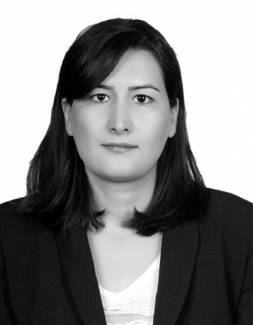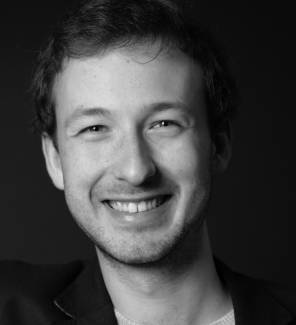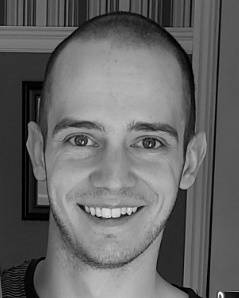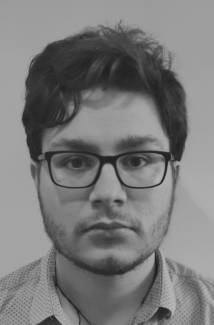This research project is based on the analysis of massive data on the NOL index and other intraoperative clinical parameters used by anesthesiologists during surgery. These parameters help them make analgesic treatment decisions in a non-communicating patient under general anesthesia and in whom it is impossible to assess pain and analgesic needs by standard questionnaires performed on awake patients.
First, the objective is to interpret the values of this index in relation to the decisions made by the clinician.
The second step is to develop an artificial intelligence algorithm that can guide decision-making for greater precision and better anesthetic safety for the patient.

Marzieh Ghiyasinasab
Postdoc fellow
Département de mathématiques et de génie industriel
Polytechnique Montréal

Mathieu Baillargeon
M.Sc. candidate
Faculté des sciences et de génie
Université Laval
Data sharing is often limited by privacy issues. This is very common in particular for health datasets, given the inherent sensitivity of this type of data. When sharing of the original dataset is not possible, one method that can be used is to generate a synthetic dataset, which contains as much statistical information as possible from the original dataset, but which provides data on false individuals in order to protect the confidentiality of respondents.
This project is interested in rigorously measuring the confidentiality protection offered by a synthetic dataset. We will carefully examine some measures proposed in the literature, to understand their guarantees and the differences and similarities between them in order to identify the measure (s) that would be the most relevant for the sharing of synthetic data.
Multipoint scintillation detectors are used to measure the dose of radiation deposited simultaneously at many locations in space and they have the advantage to allow real-time measurements. However, this detector must be precisely calibrated to provide accurate dose measurements.

Boby Lessard
M.Sc. candidate
Faculté des sciences et de génie
Université Laval
Multipoint scintillation detectors are used to measure the dose of radiation deposited simultaneously at many locations in space and they have the advantage to allow real-time measurements. However, this detector must be precisely calibrated to provide accurate dose measurements.
The goal of this project is to develop an automated routine for the calibration of multipoint scintillation detectors under the beam of a linear accelerator such as the ones used for cancer treatments, by representing the calibration data in the principal component space.
A multipoint scintillation detector measures the spectrum of the light produced within the detector. Indeed, light is produced within the detector proportional to the radiation deposited in the detector. From a calibration dataset, a Non-Negative Matrix Factorisation algorithm (NMF) is used with the aim to retrieve the pure spectral components of the measurements. To simplify the visualization of the calibration dataset, the dataset is transformed using the Principal Component Analysis algorithm (PCA), and this transformed dataset is then represented graphically in the principal component space. This space allows to visualize the spectral composition of the data, relative to the pure spectra.
Many datasets can therefore be built, represented into this space, and used with the NMF algorithm with the aim to evaluate the performance of this algorithm for different calibration datasets.
In the end, this will allow to determine the experimental datasets that have to be acquired to perform an accurate calibration of the multipoint scintillation detectors.

Guillaume Jorandon
Ph.D. candidate
Faculté des études supérieures et postdoctorales
Université Laval
This project studies the consequences of artificial intelligence (AI) systems and data science on public discourse, as well as their usage by the new content providers on the Web.
It will tackle the ethical aspects of learning algorithms and recommendation filters implemented by internet companies to select and present content to the user. Specifically, the project investigates the consequences of such algorithms on public health, especially in the propagation of medical misinformation and pseudo-medicine.
This project aims at taking a critical oversight on data science techniques and their use. Various knowledge from different fields of humanities and social science will be applied (ethics, communication studies, philosophy of techniques) and will guide the development of technical solutions, as well as recommendations for the implementation of ethical and sustainable AI.
For this reason, we will need both technical and philosophical research, working towards interdisciplinary integration.
This project studies the consequences of artificial intelligence (AI) systems and data science on public discourse, as well as their usage by the new content providers on the Web.
It will tackle the ethical aspects of learning algorithms and recommendation filters implemented by internet companies to select and present content to the user. Specifically, the project investigates the consequences of such algorithms on public health, especially in the propagation of medical misinformation and pseudo-medicine.
This project focuses on the use of machine learning techniques in external radiotherapy for cancer treatment planning.
Stochastic frontier analysis is a parametric approach used in econometrics and appropriated for medical physics. Using a retrospective bank of treated patients it will be possible to predict the optimal dose of radiation for tumor and healthy organs.
This method is applied to multiple cancer treatment sites which emerge new challenge in the context of prediction, and data processing.
Felix Desrosiers
Ph.D. candidate
Faculté de médecine
Université Laval
The project focuses on the design, operationalization and validation of a sustainable health evaluation model.
This model will be adapted to a digital platform and based on solid theoretical and conceptual foundations. Furthermore, it will gather valid indicators and will be supplied by data showing a global and ecosystem conception of health.
Once operationalized, implemented and validated in a cohort study, this model will represent an innovative strategy for sustainable health through improved technologies and intervention methods.
The project focuses on the design, operationalization and validation of a sustainable health evaluation model.
This model will be adapted to a digital platform and based on solid theoretical and conceptual foundations. Furthermore, it will gather valid indicators and will be supplied by data showing a global and ecosystem conception of health.
Once operationalized, implemented and validated in a cohort study, this model will represent an innovative strategy for sustainable health through improved technologies and intervention methods.
The characterization of Drug-Drug interactions (DDIs) is crucial for planning therapies and drugs
Discover

Featured project
Delirium is a condition that, when left unmanaged, is associated with increased mortality and longer hospitalization of patients in intensive care; therefore, its detection should be an integral part of care. It is characterized by confusion, anxiety and reduced alertness. It is estimated that 75% of delirium cases are not detected on admission to hospital. Detecting such an acute condition requires frequent monitoring of participants, which is labor intensive and requires expertise.